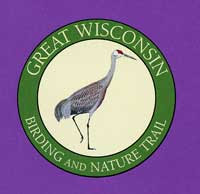Wisconsin Prescribed Fire Council meeting

This week Kathie and I attended the conference on fire ecology put on by the Wisconsin Prescribed Fire Council. The Wisconsin Prescribed Fire Council is a coalition of government agencies, organizations, and individuals striving to make the use of prescribed fire in Wisconsin safer and more accepted for all practitioners. The meeting, held in Stevens Point, Wisconsin, was attended by well over 300 very knowledgeable people.
Although fire should always be used as part of an integrated management system, it is the single most important tool of the restoration ecologist, and the least expensive. The term "prescribed" means that fire is being used in an intelligently controlled fashion, based on a written plan (the prescription) that lays out in considerable detail the conditions under which the fire will be lit.
The attendees at the conference were mostly from Wisconsin, but there were some also from Minnesota, Michigan, and Illinois. A couple of the invited speakers were from farther away.
Most of the attendees worked for various governmental or nongovernmental agencies. The Wisconsin DNR, was well represented, of course, but other agencies included the U.S. Fish and Wildlife Service, the U.S. Forest Service, the U.S. Army, the Nature Conservancy, and lots of county parks and forestry agencies. Also attending were employees of a number of companies that do contract work on restoration ecology. There were even a number of volunteers who do lots of prescribed burns.
The quality of the presentations in the various talks was high , and the content was interesting and useful.
Some of the talks I found especially interesting were:
Two talks on the history of fire on the landscape, based on tree ring and fire scar data
Techniques for igniting in various kinds of habitats, and situations that might lead to safety problems
Effect of fire on insects associated with prairie plants
Effects of fire on birds of prairies and savanna
A case study of a very large fire in Minnesota that "got away", and the lessons learned
Control of Phragmites with a combination of herbicide treatment and fire
BEHAVE, a software program of long use in the U.S. Forest Service and other government agencies for predicting the behavior of fire under various conditions of fuel and weather
Use of prescribed fire to promote oak regeneration
The use of prescribed fire on the Menominee Reservation, from pre-European times to today
Managing the unexpected in prescribed fire operations
Increasing the efficience of prescribed burning by using larger burn units
These are only some of the topics, since some of the sessions ran in parallel.
The attendance at all the sessions was good, and the Q & A was excellent.
This is the second conference that the Wisconsin Council has held, and presumably they will be held biennially.
The Wisconsin Prescribed Fire Council is about 6 years old, and is part of a national coalition of prescribed fire councils that includes most of the states in eastern United States. The map below shows which states are already involved. The lack of Western states is not surprising, since they operate primarily in a suppression mode. (I obtained the map from the Georgia Prescribed Fire Council web site, since Georgia is one of the prime movers in developing this national coalition.)









